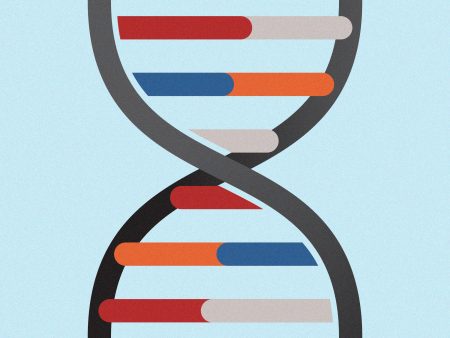October 26, 2017 – Editing DNA is what CRISPR/Cas9 is all about. With the Cas9 protein, geneticists today can remove a bad gene from a chromosome and replace it with a healthy one. This is less precise genetic engineering than what researchers have developed and reported on this week in two new studies, one appearing in the journal Nature, and the other in Science.
In the Nature article entitled, “Programmable Base Editing of A-T to G-C in Genomic DNA without DNA Cleavage” the researchers describe a way to use CRISPR to alter single base pairs. And in the Science research article, entitled “RNA Editing with CRISPR-Cas13” it describes using the gene editing technology at the RNA level.
So what are single base pairs?
A strand of DNA consists of four different chemicals strung out over a double helix. Those chemicals are adenine, thymine, cytosine, and guanine. Hence the letter designations A, T, C, and G. A always accompanies T, and C always accompanies G. These are the base pairs referred to in the Nature article.
Editing at the base pair level rather than cutting and pasting as is done with CRISPR/Cas9 presently, represents an even more refined approach to tackling inherited diseases. With base editing we can change single chemicals, one at a time, modifying DNA at the most granular level where in fact we can tackle a phenomenon called point mutation, associated with 32,000 of the 50,000 changes within DNA associated with genetically caused diseases.
In editing base pairs, the researchers at Harvard and the Broad Institute demonstrated using CRISPR to change an A to a G. By doing this the researchers switched on the cells own repair mechanism to complete the process by fixing the other chemical in the base pair. So in switching A to G, the cell then switched T to C rewriting single lines of genetic code rather than whole genes as is currently done with CRISPR/Cas9. In reverse other researchers have demonstrated that switching a G to an A, the reverse is associated with another 15% of point mutations responsible for genetic diseases like anemia.
Repairing RNA Base Chemicals Provides Temporary Relief
In the Science article, researchers at the same locales, Harvard and the Broad Institute, have described how they targeted base chemicals in RNA, DNA’s companion, by using CRISPR with Cas13, the latter a different protein from Cas9.
In RNA the base pairs are adenine, the A, uracil which is referred to as U, guanine, the G, and cytosine, the C.
The researchers targeted adenine, substituting a nucleotide chemical, inosine deaminase, known as I. Inosine strengthens a cell’s immune system by temporarily repairing damaged RNA sequences associated with some genetically caused conditions including diabetes, heart disease, blood disorders like sickle-cell anemia, and hereditary deafness and blindness.
Why only temporary?
DNA’s companion continuously degrades within a cell and then gets regenerated. Each time the cycle repeats RNA reverts to its original form. That means any CRISPR changes don’t get permanently incorporated. This means CRISPR-RNA research can only produce temporary therapeutic fixes in the same way a daily pill or a weekly given shot can alleviate symptoms while not actually curing the disease. It is possible, therefore, to encapsulate this newly discovered CRISPR-derived capability and serve it up in pill form.
I reported similar success last week from research being done at UCSD where CRISPR is targeting defective RNA in patients with Huntington’s , ALS and myotonic dystrophy, successfully eliminating 95% of the compromised cell proteins associated with these diseases. In this case, as well, the current goal is to produce a therapeutic medicine that can be given daily or weekly.
















[…] fix to permanently lower bad cholesterol levels. To understand how a genetic vaccine works here is a quick refresher on DNA. It is a complex molecule containing four nucleotides, also called nucleobases. They go by the […]